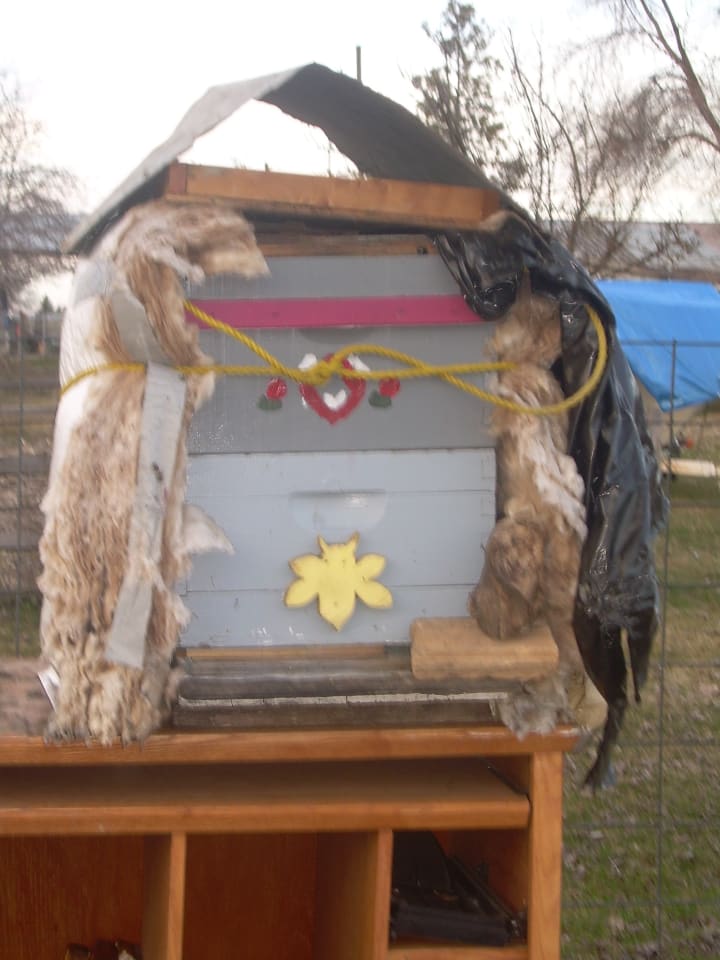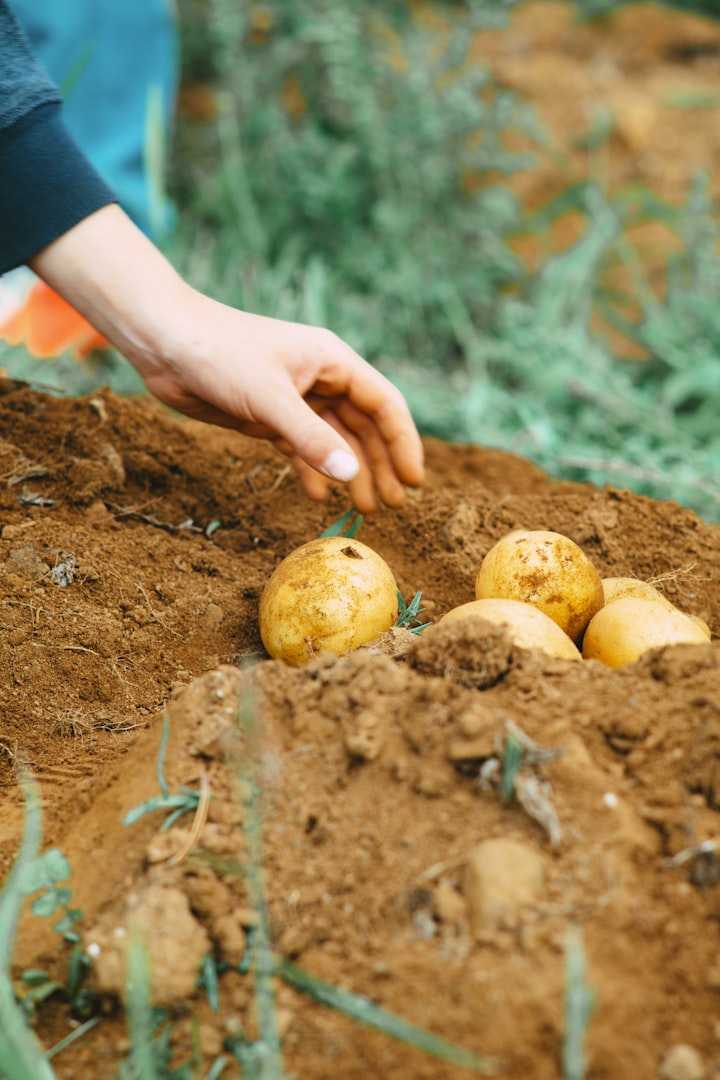Capturing the Wild..... Bees
Are Bees Friend or Foe?

"Run! Run into the house! RIGHT NOW!" I shouted. With shoulders hunched, I ducked my head as low as I could and ran. Millions of tiny insects were suddenly swirling around my head as the echo of their furious buzzing struck fear into my soul. Impossible to dodge, they kept slamming into my head and body at a ferocious speed but non alighted. Stunned momentarily they just kept flying in a giant collective tornado. Keeping my head as low as I could, while still increasing the distance between this invading force and myself, I scooped the one year old and dashed inside, slamming the sliding glass door behind us. Dancing nervously around we all checked our clothing and hair for any tag-alongs. Assured that we had escaped unencumbered, we then turned our attention to the window, peering nervously to try to ascertain what on earth had invaded our back yard.

“What is it, mom?”
“I’m scared.”
“Are they bees?”
“I don’t know,” was my reply, “Let's go find out.”
The kids shrank back, shaking their heads and looking at me like I was nuts.
“Come on,” I urged them, “We will go out the front door, and hop in the car and drive into the backyard to check them out.
It may have been the fastest I’ve seen this crew pile into our small green Subaru Outback. Unsure of what was going on, no one wanted to be caught in the open air. “You don’t need to buckle. Just sit down! And make sure the windows are closed tightly!” Several kids climbed into the cargo area and I headed to the back of our small property slowly, so as not to upset our mysterious intruders any further. They were still swirling, although there was a small clump beginning to accumulate on a branch and it was growing larger by the minute. Driving quite close, I stared intently. None were landing on the car. They weren’t landing anywhere, except the ones that were adding their bodies to the quickly swelling mass. It was already 4 or 5 inches in diameter and I began to feel excited.
“I think these are honey bees,” I informed my captive audience. “Wow. I have always wanted to be a beekeeper. Wouldn’t it be amazing if we were just gifted a wild hive of bees?”
Some of my offspring looked less than impressed.
“Won’t they sting us?” asked my older daughter.
“I don’t like bees,” exclaimed my younger girl.
“I honestly don’t know a ton about bees, but I do know they are not usually aggressive. And hey, we can learn. Lots of people keep bees.” They were all still pretty dubious. In the meantime the collection of bees had doubled in size and there were less bees circling overhead.

“Let’s go find a beekeeper and see if they can help us catch them.” I backed out of the yard and returned the car to the driveway. The kids were mostly annoyed that their day in the yard had been ruined. While I started making phone calls, they set up an indoor game and kept themselves busy.
“Can we just go out and play?” whined the 7 year old.
“You may go onto the deck.” Just pay attention and if the bees seem interested in you, come back inside. It was a large yard and the bees were congregating in the very back corner.

Finally, a friendly beekeeper called me back and offered to come help us catch the swarm that evening. “Don’t worry,” he assured me, “they should still be there. And swarming bees are typically not threatening as they don’t have a home to protect. I mean, don’t poke them or anything, but if you want to go look at them you can. Swarms are pretty interesting to watch.” That made me feel better and we began venturing outside and creeping closer and closer to the massive swarm The giant ball of bees was emitting a low hum that increased in volume as we approached. This time I brought our camera and caught some of the activity on film.
Watching this family of insects in fascination, I couldn’t believe our good fortune. Left to my own timing, I would have eventually taken a class and learned how to care for bees but apparently THIS was the year I would become a beekeeper!
We spent the day learning about and observing what would become our first hive of bees.
One of the ways bees multiply is by creating additional hives from one large or healthy hive. Realizing crowding is becoming an issue they make a new queen and a large number, (maybe half) of the worker bees prepare to start a new home with her. Just prior to swarming, the immigrant bees will fill up on honey. Stuffing themselves gives them the energy they will need to leave, protect the queen and find a safe place for a new hive. It also makes it much more difficult for them to sting. Not that honey bees are want to unprovoked stings anyway, but a swarming hive which has no home or food store to protect has no reason to feel threatened and is unlikely to attack or sting.
Our new friend Bill, arrived that evening with a variety of tools and supplies. He had:
We led him eagerly to the swarm which was much calmer now that the sun was nearing the horizon. They had formed a large ball and only a few scout bees could be seen coming and going. Bill said they were looking for a good location for the new hive. "We are going to hopefully give them exactly that." I could see him smiling behind his mesh face covering.
You could tell he enjoyed this hobby as he spoke calmly to the bees while slowly working the branch they were attached to loose and dropping it gently into a large cardboard box. (I didn't realize until years later that he had been hoping to take the bees home. Beekeepers love collecting swarms from the yards of concerned citizens. It's a great source of "free bees.")


I had mentioned on the phone, my excitement at being thrust into the role of beekeeper and Bill generously walked us through all the necessary parts of setting up this first hive. He set up the hive and filled a black box called a feeder with sugar water. He added a special syrup with lemon grass and some other herbs which he said would encourage the bees to feel at home and stay in the boxes we provided for them.

His daughter liked to paint their hives and he generously gifted us these first two boxes. After the hive body was all set up, with the feeder and several frames, he carefully opened the cardboard box and gently poured in the bees. The sun was setting and the bees were very docile as he covered them with an inner lid and an outer lid and stuffed cloth in both of the openings so they couldn't leave in the night. "That should keep them nicely and give them a chance to settle in and start to feel like home."
Bill continued to visit the hive and teach us how to care for our bees. By the following spring we were ready to take a class at our local extension office and become official beekeepers. We also added a second hive!
My 8 year old became the youngest certified apprentice level beekeeper in the state and she loved to take her friends to visit the beehives.

We had come a long way from our terrified escape into the house to fully certified beekeepers just one year later. By the next year we had 4 hives and when our own bees swarmed we were well prepared to catch them and transfer them to a brand new hive.

This video is from when our own hive swarmed. You will notice that we are much calmer and even the kids are comfortable standing in and under the escaping bees.


While not quite part of the family like a dog or a cat might be, we felt a genuine fondness for our girls. A hive is made up of one queen and tens of thousands of female worker bees. The drones or male bees do not work and their prime function is mating with the queen. When given the opportunity to work at a bee booth selling honey and educating the public, my kids loved to share interesting facts including what happens to the "boy bees" in the fall when their wings are ripped off and they are kicked out of the hive so that they will not be an unnecessary drain on the food stores over the winter.

Here you can see the yellow pollen which these worker bees have collected and are carrying back to the hive on their back legs. The color changes as different crops flower throughout the season. The first pollen to show up in the spring is usually from the dandelions and is a beautiful yellow color (like the flowers themselves). Even my then 3 year old loved to sit and watch the bees return to the hive with their legs leaden with various colors of pollen.
Capturing the wild bees was the start of an exciting hobby for our whole family. Even my husband, the Orkin Man, enjoyed the delicious honey we harvested each fall. And the irony of his profession exterminating insects while we worked hard to raise and care for our girls, did not escape us.
* * * * *
If you enjoyed this glimpse into our wild life with bees please consider sharing it.
Here is another story about discovering healing in the wild. (If you have never seen a dragonfly smile, you have to see this one!) Discovering Joy in the Wild
About the Creator
Maria Calderoni
Born a lover of stories. I love to read, write and tell them. Tales of inspiration, resilience and struggle.
A life long learner, I enjoy nothing more than sharing interesting and useful things I have learned so far.
Please join me.






Comments
There are no comments for this story
Be the first to respond and start the conversation.